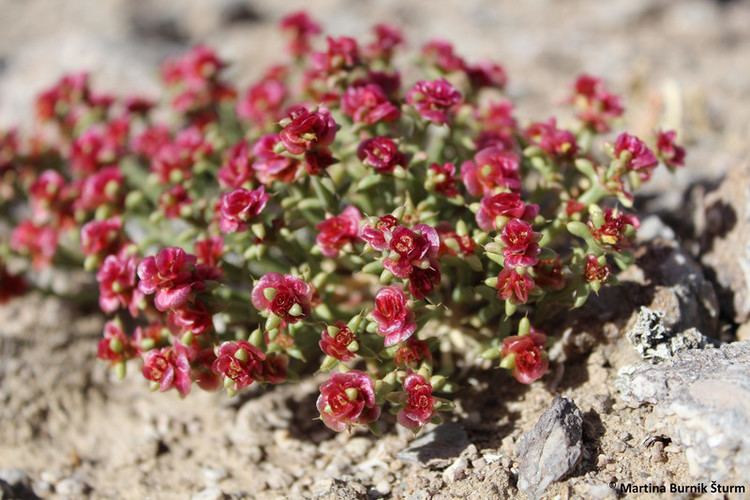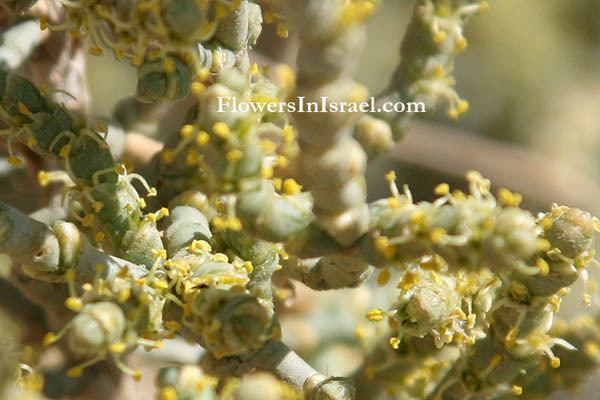Scientific name Anabasis Rank Genus | Tribe Salsoleae | |
Similar Anabasis articulata, Amaranthaceae, Anabasis aretioides, Salsoloideae, Kalidium | ||
Anabasis is a genus of the subfamily Salsoloideae in the family Amaranthaceae. It is distributed in southern Europe, North Africa, and Asia.
Contents
Description

The species of genus Anabasis are annual or perennial herbs or subshrubs. Their stems are fleshy and articulated, mostly glabrous with the exception of hairy tufts at the nodes, rarely with papillae-like trichomes or woolly. The opposite leaves may be reduced to small scales or normally developed.

The inflorescences are elongated or condensed spikes. The bisexual flowers are sitting solitary or in groups of up to 4 in the axils of upper leaves (bracts), with 2 paired bracteoles. Flowers consist of 5 subequal membranous perianth segments, that are free nearly from base; 3-5 stamens without apppendages; and an ovary with 2-3 thick and short stigmas.

In fruit, prominent membranous wings develop on the back of the perianth segments, usually 2-3 of them larger than the others. Rarely, the perianth remains unwinged. The fruit may be baccate or dry, either vertical and compressed or nearly spherically shaped. The lenticular seed is vertically orientated, filled by the spiral embryo without endosperm.
Distribution

The genus Anabasis is distributed from Southwest Europe and North Africa, the shores of the Red Sea (Ethiopia) to Southwest Asia and Central Asia. The center of diversity lies in Asia. Anabasis species grow in steppes and semideserts.
Systematics
The genus name Anabasis was published in 1753 by Carl von Linné in Species Plantarum. Type species is Anabasis aphylla L.
The genus Anabasis belongs to the tribe Salsoleae s.s., in the subfamily Salsoloideae of the family Amaranthaceae (which includes the family Chenopodiaceae). According to Akhani et al. (2007), the genus comprises 29 species:
